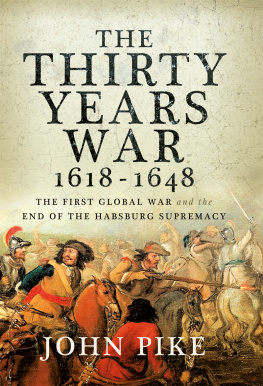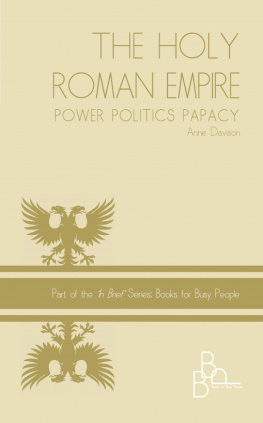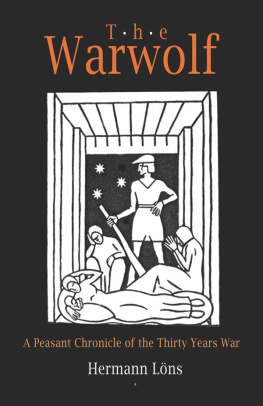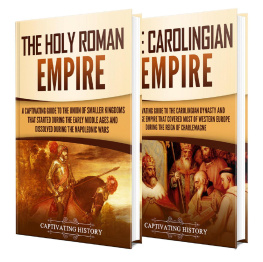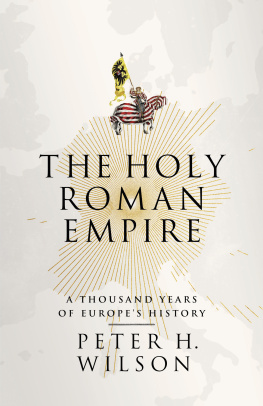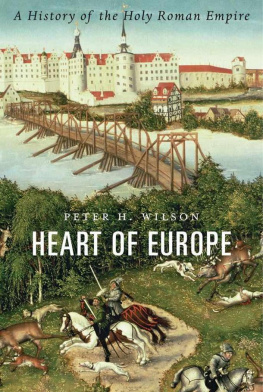The Holy Roman Empire, Sweden, and France in the Thirty Year War, 1618-1648
Af Jochnick
Copyright 2018 Af Jochnick
All rights reserved
First Edition
Page Publishing, Inc
New York, NY
First originally published by Page Publishing, Inc 2018
ISBN 978-1-64350-198-7 (Paperback)
ISBN 978-1-64350-199-4 (Digital)
Printed in the United States of America
Table of Contents
Acknowledgments
Any book is hard to write, and without help, not much will be accomplished.
I have been lucky to have had dedicated and competent persons willing to step in and expend some of their scarce, valuable time to help me.
My wife, Liz, has acted as the principal editor. She has also, as in the past, obtained source material, often from remote places, difficult to locate.
Alistair Dinwiddie has made the maps. A member of a famous, multigeneration mapmaking family from Scotland, Alistair skillfully turned almost unreadable scribble into fine and clear maps.
Our daughter, Ann, has reviewed the work and proposed useful corrections.
Our friends Tom Jahn and Henning Hamilton have both assisted by valuable comments and suggestion and by providing important books.
Our grandson Nico has prepared a beautiful cover page.
Thank you all for your great efforts.
Introduction
The Thirty-Year War is considered to have started in 1618, exactly four hundred years ago. Why is it worth spending time on an event so far back in time? For one thing, the war was one of the most cataclysmic events ever to hit Europe. Some 35 percent of the people in the Holy Roman Empire died, and a huge amount of property was destroyed. Percentagewise, it was a far greater catastrophe in terms of lives lost than even the Second World War. On the positive side, at wars end, in the Westphalian Peace, important political and religious issues were settledin some instances, permanently. Rules were adopted, defining the nature and rights of independent states and, on the diplomatic side, of the conduct of international conferences.
The Thirty-Year War has often been thought of as a religious conflict, because the principal cause was Emperor Ferdinand IIs intense desire to roll back the Reformation in the Holy Roman Empire. It started as an argument between the emperor and some Protestant opposition groups in the emperors principality, Bohemia. They rejected the emperors policies and took control of his principality. While the emperor was able to defeat the insurrection, he was not willing to stop at this point. He now chose to pursue his ambitions to restore Catholicism as the exclusive religion by military means. As a result, a small hostility turned into a big war. Eventually, it came to involve numerous outside countries, many with no real interest in the original dispute
This work is not intended to offer a complete account of the war but will instead concentrate on the involvement of Sweden and France, two countries for whom the war came to be of great importance.
Why did they enter the war, what were their objectives, and to what extent were such objectives realized?
There will also be a focus on the identity of, and performance by, key individuals in these countries and the empire and the significance of such individuals. Finally, there will be an attempt to assess the consequences of the war and the 1648 peace on other major participants and the population of the Holy Roman Empire. This is a limited approach, and readers must be reminded that manypossibly significantevents in the Thirty-Year War are not covered.
I
The Beginning
A. The Holy Roman Empire in 1600
In the beginning of the seventeenth century, the Holy Roman Empire covered what is today
Germany, the Czech Republic, Slovakia, a chunk of Western Poland, and parts of Belgium, Holland, and Denmark. It consisted of a large number of principalities, free cities, and other political entities with populations varying from a million people to a few thousand. While they were all part of the empire and recognized its emperor as their ruler, the emperors rule was more nominal than real. These states and cities all felt they had authority to run their areas, big or small, as they saw fit. The rulers of the bigger political entities were referred to as electors, and a small number of them, seven altogether, had the prerogative of electing the ruler of the empire.
The religious conflict, between Catholics and Protestants in the empire, was initiated by Martin Luther, nailing his statement of objections on a church door in Wittenberg in 1517. An attempt to establish peace within the empire was made by the agreement in Augsburg in 1555. It confirmed the rights of citizens to be of either Lutheran or Catholic faith, and the different principalities and other entities were entitled to decide which faith their local government would follow. The individual citizens could practice their religion freely, regardless of the faith their government chose to adopt. An uneasy peace followed the Augsburg settlement, interrupted by local conflicts between members of the two faiths. In addition, the Calvinists received no protection under the Settlement.
B. Moves toward Armed Conflict
In 1607, problems intensified, as Maximilian, the elector of Bavaria, took control of
the Protestant-free city of Donauwrth and reintroduced Catholicism. The following year, some Protestant states formed the Protestant Union as a defensive move. In response, Maximilian organized the Catholic League in 1609. In 1619, Ferdinand, the ruler of Bohemia, a major principality, was elected emperor of the Holy Roman Empire. Ferdinand was a member of the Hapsburg family, and he was totally dedicated to the Catholic faith. Ferdinand decided to reverse the Reformation. Despite the Augsburg settlement, he began to force Lutherans and Calvinists, anywhere in the empire, to switch back to the Catholic church.
Emperor Ferdinand II
Ferdinand was born in 1578. A member of the Hapsburg family, he was the son of Archduke Charles II of Austria and Maria of Bavaria. He received a strict Catholic education from Jesuit scholars and graduated from university in 1595. With the assistance of the king of Spain, also a member of the Hapsburg family, Ferdinand was elected ruler of Bohemia in 1617 and emperor of the Holy Roman Empire in 1619. His aggressive steps to reverse the Reformation caused the start of the Thirty-Year War. Objections to his program from major principalities within his empire caused Ferdinand to negotiate a peace with certain Protestant states. Ferdinand died in 1637.
*****
Even before becoming emperor, Ferdinands aggressive actions caused events in Bohemia to reach an explosion point. In May 1618, a Protestant group, mostly Bohemian nobility, assembled in Prague, Ferdinands capital. They stormed his palace and threw his top assistants out a window (Ferdinand had escaped to Vienna). The assistants landed in the moat surrounding the palace and, rather miraculously, survived. To complete their insurrection, the Protestant group then selected their champion, Frederick, the elector of the Palatinate, a Calvinist principality, to become ruler of Bohemia.
Ferdinand, at the time, had no significant army to deal with Frederick and the rebels; but in 1620, he sought help from Maximilian. As head of the Catholic League, Maximilian had raised an army, commanded by the feared General Johan Tsearclaes, count of Tilly (Tilly). Ferdinand and Maximilian made an agreement under which Maximilian provided military forces in return for considerable territorial concessions from Ferdinand.




